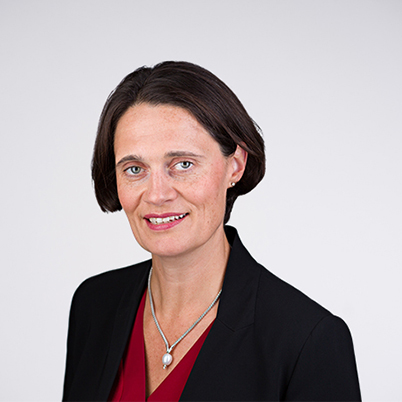
By Amy Barnes ,
Global Head of Energy & Power, Marsh
01/02/2023 · 4 minute read
The annual meeting of the World Economic Forum in Davos is often criticised as elitist. It’s not hard to see why – the meeting is, after all, full of CEOs. But the critics imply that getting together in Davos makes participants out of touch. In my experience, having attended the meeting for the second year, that’s not true at all.
Davos is a place that both encourages and rewards curiosity. At most conferences and events, everyone tends to come focused on their own agenda. At Davos, people come to listen. Everyone wants to talk to anyone: why are you here? What are you hearing? What are you thinking about? You come away with unexpected insights from conversations you wouldn’t otherwise have had.
Those conversations remind you how quickly business models are changing. For example, I spoke with a fertiliser company that, spurred by Covid, has rapidly digitalised its sales operations in rural areas of a developing country. I learned how a tractor manufacturer is exploring an Uber-like model for smaller-scale landowners who need access to machinery only from time to time.
As a broker, these kinds of conversations are valuable. Our business exists to help other businesses to manage risk – and as business models evolve, so does the nature of the risks that companies face. Insurers need, in turn, to evolve their product offerings. A good example is the intersection of two subjects that were much discussed at Davos – climate change and supply chains.
A company’s ability to do business is dependent on an entire ecosystem, incorporating Tier 1, Tier 2, and Tier 3 suppliers, infrastructure that connects the various assets in the supply chain, and people. Yet many client studies don’t assess climate risk comprehensively – they look only at how extreme weather events could impact a company’s own assets, not at this wider ecosystem.
One way to solve this problem is by modelling a client’s entire ecosystem. This enables us to assess how climate damage in each part of the ecosystem would impact on revenue, and inform decisions about where to prioritise resilience measures. We are currently developing an approach to provide businesses with these insights.
My most encouraging takeaway from Davos was the sense that everyone – from asset owners to technology providers – increasingly sees the value of sharing data and collaborating on solutions to the challenges of climate change. This was especially apparent at the launch event of the Sustainable Buildings Task Force, part of the Sustainable Markets Initiative.
Buildings represent 40% of total emissions – and two-thirds of those emissions are from running buildings, with one third embedded in the construction phase. Getting this right is critical. In a room full of companies that often compete with each other, there was a clear and heartening recognition of the common interest that exists in looking into how to do things differently, to support the changing needs of customers and the planet.
This will be a critical year for the climate. After a wide range of commitments were made in 2021, and started to be operationalised in 2022, the challenge for 2023 is to unlock the capital needed to finance the transition. There was widespread acceptance at Davos that the Russia-Ukraine conflict has accelerated the energy transition overall – while the switch from fossil fuels to renewables has been motivated by security concerns, it also improves sustainability.
But there was also a sense that we need to look again at communications around climate change: the science is unequivocal, but messages about the urgency of acting are not landing effectively enough. One session showcased an approach that involves highlighting the impact on people from climate change – mapping the lives lost as a result of extreme weather events, as opposed to just changing climatic impacts.
The implications of the US Inflation Reduction Act were also widely discussed, with concerns about flows of capital to the US at the expense of other regions, counterbalanced by optimism that the scale of the incentives will speed up the adoption of green technologies globally. Davos left me with a clear sense of the challenges ahead – but also energised, by having spent time with motivated people who have the power to get things done.